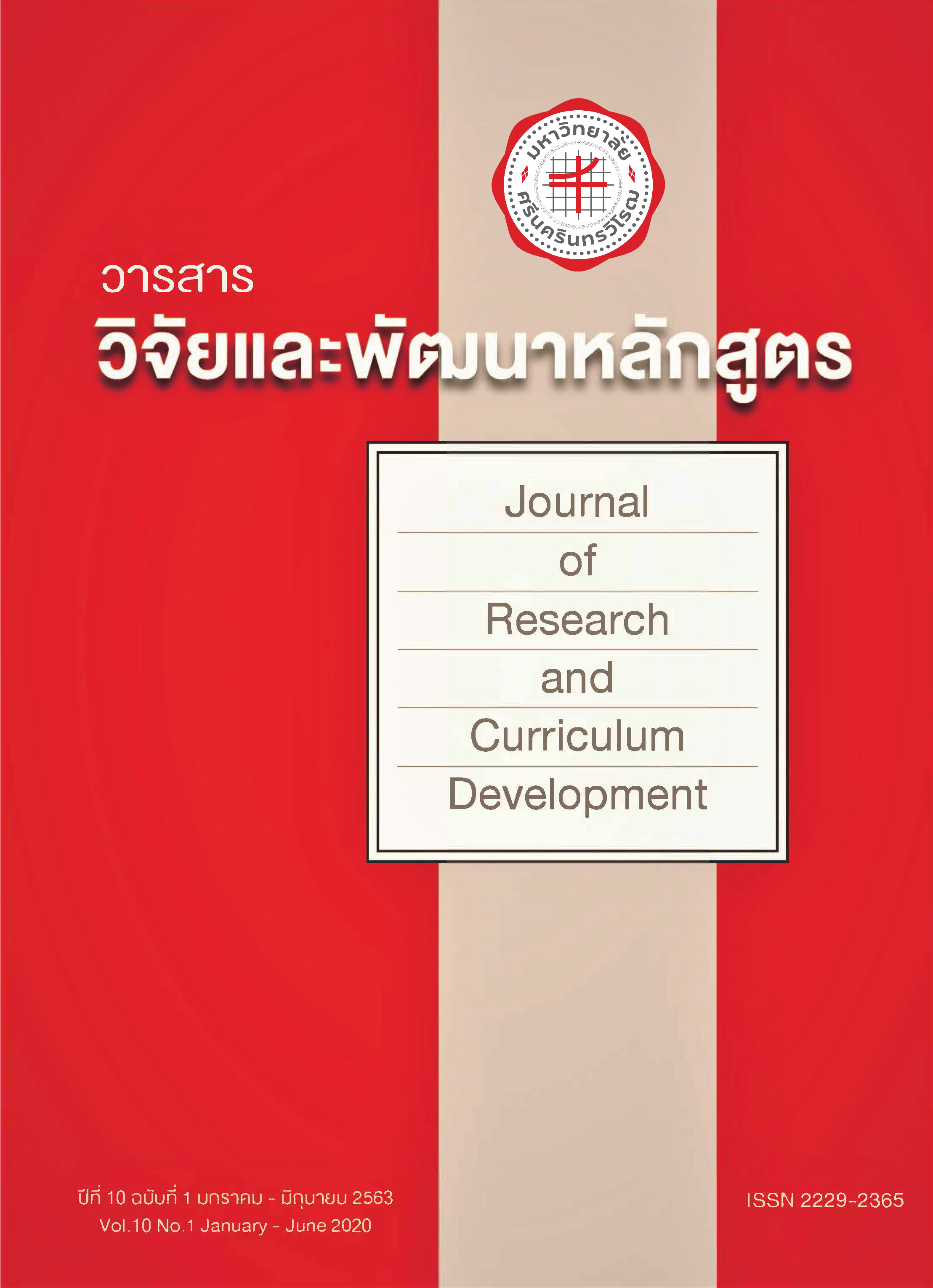การศึกษาการจัดการแสดงทางศิลปวัฒนธรรมที่มีกระบวนการในการพัฒนาผู้เรียน :กรณีศึกษาโรงเรียนสาธิตมหาวิทยาลัยศรีนครินทรวิโรฒ ประสานมิตร (ฝ่ายประถม)
Keywords:
Art and Cultural Management, Learning ProcessAbstract
The objectives of the research are to 1) study the patterns which are the vital keys to organize Cultural Performance of Srinakharinwirot University Demonstration School (Elementary) and to 2) study stakeholders’ attitudes towards the learning outcomes after the performance of Srinakharinwirot University Demonstration School (Elementary). The study is based on analyzations from playbills and recorded videos of the school’s performances from the past 11 years together with the result of the questionnaires taken by the stakeholders that had watched the performance of the year 2019. The findings revealed that 1) Srinakharinwirot University Demonstration School (Elementary) has patterns in organizing the Cultural Performance which emphasize on everyone's equal participation in the school. According to the determination of the Ministry of Education, the Cultural Performance is added to Thai Dance subject as one of the basic subjects for students to study at school. The purpose of which is to enhance students' creativity in organizing and designing their own performances with teachers. After that, all the performances designed by students and teachers will be performed in the school's annual performance. Moreover, the school also applied these following factors; the principle, the pattern modeling, the objective, the operation and the evaluation.2) The attitudes towards the outcomes of Khon and Thai Dance performances of stakeholders including the administrator, teachers, students and their parents all agree more than 80 percent that the school performance can create and improve students’ abilities which are 1) their creativity 2) their self-confidence and 3) their adaptation. And in terms of students performing in the show, more than 90 percent of them are highly satisfied with their performances.
References
ประวิทย์ ฤทธิบูลย์. (2558, มกราคม - มิถุนายน). นาฏศิลป์ไทย : สื่อทางวัฒนธรรมที่มากกว่าความบันเทิง. วารสารศิลปกรรมศาสตร์วิชาการวิจัย และงานสร้างสรรค์. ปีที่ 2 (ฉบับที่ 1): หน้าที่ 112.
ลัดดา ตั้งสุภาชัย (2560: 25 กันยายน). สัมภาษณ์โดย ภิรฏา ภิรนานนธ์. ที่โรงแรมเจ้าพระยาปาร์ค.
สุขุมาล เกษมสุข. (2560: 26 กันยายน). สัมภาษณ์โดย ภิรฏา ภิรนานนธ์. ที่โรงเรียนสาธิตมหาวิทยาลัย ศรีนครินทรวิโรฒ ประสานมิตร (ฝ่ายประถม).
บรรจง ล่ำซำ. (2549). หนังสืออนุสรณ์ 50 ปี โรงเรียนสาธิตมหาวิทยาลัยศรีนครินทรวิโรฒ ประสานมิตร (ฝ่ายประถม) ปีการศึกษา 2549. หน้า 54.
The Educate America Act of 1994. (1994). 15 Reasons why all children should learn to dance. Retrieved September 1, 2018, fromhttp://languageoftesoul.wordpress.com





